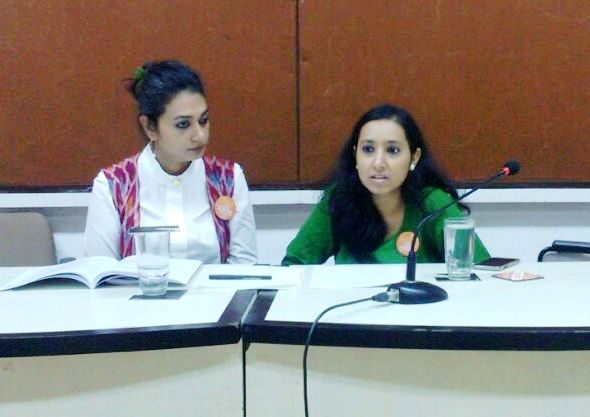82% Dawoodi Bohra Women Unlikely To Let Their Daughters Undergo FGC: Survey
Illustrating an evident silver lining, 81% Dawoodi Bohra women have said that they want to end the practice of female genital cutting (FGC). A first-of-its-kind survey released by Sahiyo, a not-for-profit organisation, came up with many such facts on the occasion of International Day of Zero Tolerance for Female Genital Mutilation that falls on February 6th every year.
If you thought that FGC existed only in African countries, here is a jolt for you. FGC exists in many Asian countries including India, Pakistan, Srilanka and others. Developed nations like United States of America, United Kingdom, Australia and Canada are also witnessing the practice imposed on young girls residing there.
Known to be educated and progressive, the Dawoodi Bohra community has been practising FGC secretly, behind the closed doors for several decades. The community has a population of about 1.5-2 million spread across many countries. Although the practice is considered widespread, the topic was, until recently, rarely spoken about or mentioned in open discussions.
The global online survey had 385 Dawoodi Bohra women from 17 countries participate to tell stories of their khatna or khafd and also to express their opinions about the practice of FGC. Majority participating women were from India and USA.
Out of the 385 participating women, 80% were subjected to khatna as children. Out of these women, 66% were only 6-7 years old when they underwent the procedure.
FGC as performed in the Dawoodi Bohra community is about removal of prepuce from the genitalia of young girls. It is performed by a traditional cutter also known as ‘mullani’ with rudimentary equipment like disposable blade under non-sterile conditions and in a household setting. Although they claim to remove only the prepuce, many women have had either a part or the entire clitoris cut. There have been cases of extensive bleeding, infections, and other complications due to botched procedures by untrained and uneducated cutters from no medical backgrounds.
According to the survey, only 15% were cut by a health professional while 74% were cut by an untrained traditional cutter. About 65% were not sure about which part of their genitals was cut. Around 98% of those who were cut described experiencing pain immediately after khatna.
Illegal in many countries, members of Sahiyo say that there is no mention of the practice in the holy book of Quran. The reasons given for the practice varied. Following are the responses from the survey.
- For religious purposes- 56%
- To decrease sexual purpose-45%
- To maintain traditions and customs- 42%
- For physical hygiene and cleanliness- 27%
However, raising the hopes high, most participating women are against the practice now. As many as 82% women have said that they are unlikely or extremely unlikely to continue Khatna on their daughters. Also 81% said they are not okay with Khatna continuing in the community.
“Being an online survey, it has its own limitations. But as the first large scale research study on FGC among Dawoodi Bohra community, Sahiyo’s survey aims to fill this gap in knowledge and data. The results point to the need for much more in-depth field research, both qualitative and quantitative. Further, surveys of Bohra men’s attitudes towards Khatna are also needed,” said Aarefa Johari, co-founder Sahiyo.
The research also highlights some experiences narrated by participating women. “It was the most horrific experience of my childhood and something that I will remember for the rest of my life. I was taken to some random shack in some random village and a lady that I had never met in my life held me down and took a knife to me. I just remember screaming and crying through the entire thing and being in pain for the next week or so. I would absolutely never have my child ever go through such an experience in her life,” wrote one of the respondents.
FGC has not been a topic of open discussion. Thus this survey aims to bring details on table to have the practice eradicated with community education and legal provisions.
As a part of Sustainable Development Goal 5- gender quality, the United Nations aims to eradicate female genital mutilation by 2030. “UN calls the practice as violations of child, women and human rights. There has been almost no research on Khatna among Bohras before this. In order to eradicate the practice by 2030, we need to document the details well. Research is essential to know more about the degree of prevalence of Khatna and pushing for an end to the practice,” said Insia Dariwala, co-founder, Sahiyo.
Thank you for reading the story until the very end. We appreciate the time you have given us. In addition, your thoughts and inputs will genuinely make a difference to us. Please do drop in a line and help us do better.
Regards,
The CSR Journal Team













